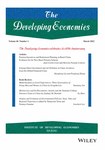The Great Indian Savings Puzzle
Speakers:
Chetan GhateDirector, IEG
Abstract:-
In the last 50 years, the gross savings rate across many middle income countries has been more or less stationary. India has been a notable exception. India witnessed a secular rise in its savings rate from the 1950s till the GFC. However, post GFC for India, and for some other countries like China, the savings rate has declined continuously. From 2009 to 2021, the Indian savings rate fell from 37% to 30.5% as a percentage of GDP. In India, we find two key aspects of savings dynamics. First, household savings constitute a large fraction of national savings and it, too, presents the same inverted-u shaped trajectory as national savings. Second, within household savings, savings in the form of physical assets has a more pronounced inverted-u shaped trajectory than financial assets savings. Our main goal in this paper is to explain the secular rise and fall of the savings rate in India.
jointly with Anuradha Saha (Ashoka University) and Pawan Gopalakrishnan (RBI)





